Dr. Valerie Rucker-Bussie, founder of Priority One Wellness, and Laylaa Randera and Donna Jonte, Community Engagement staff at The Phillips Collection, on the inaugural POW Yoga + Arts program at Phillips@THEARC.
“Priority One Wellness Restorative Justice Yoga + Arts” started in January 2023 as an after-school program for seventh and eighth graders at Washington School for Girls, one of the resident partners at THEARC. At the end of the four-week pilot, when the students expressed how much joy they found in yoga, art, and community, we gladly extended the weekly program through the end of the school year.

Inspired by restorative justice principles: words to live by
Born out of a conversation during Phillips@THEARC’s Chalk Walk in summer 2022, the program was shaped by Dr. Valerie Rucker-Bussie, PT, DPT, NCS, founder of Priority One Wellness (POW). After seeing the Phillips’s light-filled workshop at THEARC, Dr. Val envisioned it as a healing and restorative space, and contemplated a collaboration with the Phillips. Thanks to Dr. Val, POW Yoga + Arts grew from idea to reality, connecting two organizations deeply committed to community engagement through wellness.
Dr. Val designed the pilot program using restorative justice principles such as relationship, respect, responsibility, repair, reintegration, and truthful speaking. She consulted with the DC Peace Team, which provides restorative justice trainings to the public, to come up with these principles. As a certified yoga instructor, Dr. Val paired yoga yamas with restorative justice topics, creating the themes for the classes. The weekly sessions consisted of yoga, conversation, and art-making as a way to promote self-care and creative expression in the context of community wellness. Dr. Val hypothesized that combining restorative justice topics with physical and artistic expression could provide tools for the community to use in collective healing.
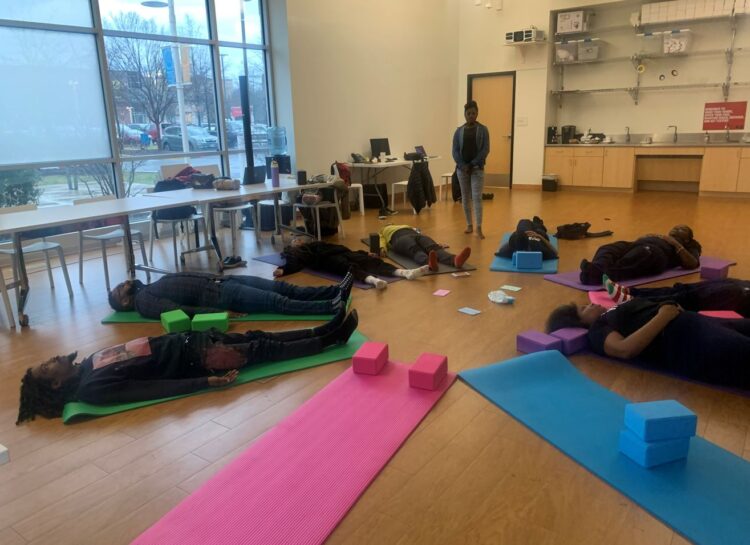
Dr. Val leading Shavasana, a restorative resting pose
The Phillips Collection introduced the girls to mindful looking as we investigated artworks, artistic methods, and materials that align with yoga and restorative justice principles. We chose artists of color, most with connections to DC, exploring Simone Leigh’s sculpture, Sam Gilliam’s paintings, David Driskell’s prints, and Dee Dwyer’s photographs on view at Phillips@THEARC.
We began each session by sharing how we were feeling, matching our emotions to a line, shape, color, or idea we found in an image from the museum’s permanent collection. To start this conversation, we used The Philips Art Cards, a set of 54 cards of artworks from the collection, developed by our Education Department. This discussion led to the topic of the day—a restorative justice principle that connected to a yoga pose and an art experience. Early in the pilot phase, we wanted to emphasize that community building and positive change depend on flexibility and open-heartedness, curiosity, reflection, and thoughtful action. We thought about these habits of mind in relation to making art and practicing yoga.
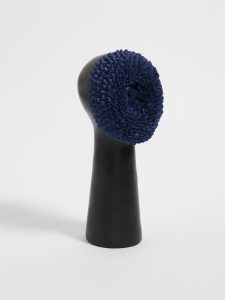
Simone Leigh, No Face (Crown Heights), 2018, Terracotta, graphite ink, salt-fired porcelain, and epoxy 20 x 8 in., The Phillips Collection, Director’s Discretionary Fund, 2019
For example, to strengthen our own sense of community, we played a collaborative sculpture game in response to Simone Leigh’s No Face (Crown Heights). First we looked at an image of the ceramic sculpture, sharing our observations, questions, and thoughts. With air-dry clay, we each created a small sculpture that shared a characteristic with Leigh’s artwork. We passed our sculpture to a classmate, and with another piece of clay, added a small piece that represented part of our identity. We continued passing and adding until the sculpture returned to its starting place, touched by all participants in different ways, transformed through collaboration. Then we put the sculptures together to make a whole.
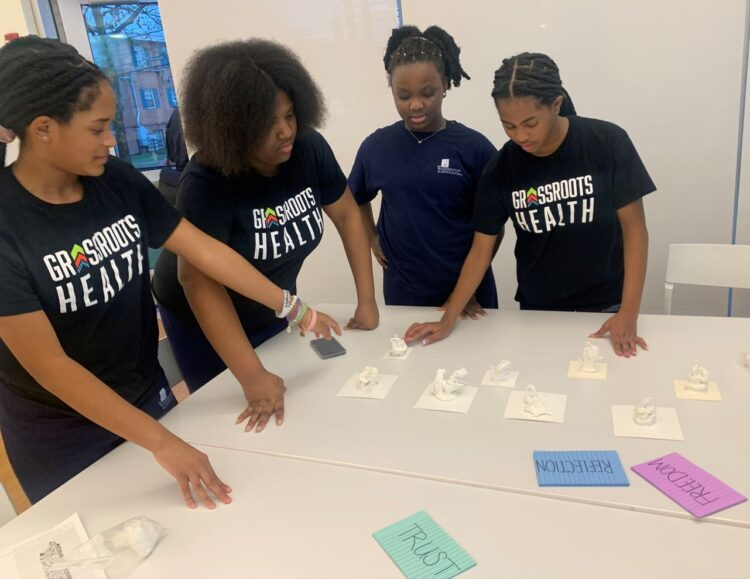
Arranging the collaborative-clay sculptures
The girls embraced this metaphor and definition of community—each student is unique and also an essential part of the whole. This was evident especially in the Shavasana at the end of each yoga practice, our mats forming a circle.

Sam Gilliam, Red Petals, 1967, Acrylic on canvas, 88 x 93 in., The Phillips Collection, Acquired 1967
To understand how restorative justice, like the creative process, depends not only on community support, but also on individuals embracing curiosity, persistence, and innovation, the next week we looked at Sam Gilliam’s painting Red Petals. Gilliam, with startling originality, poured thinned acrylic on unprimed canvas, folding and unfolding it to create unexpected marks in a field of saturated color. He said that his process was “a sort of accident, a part that I controlled, and then a part I didn’t control, a part I set into motion.”
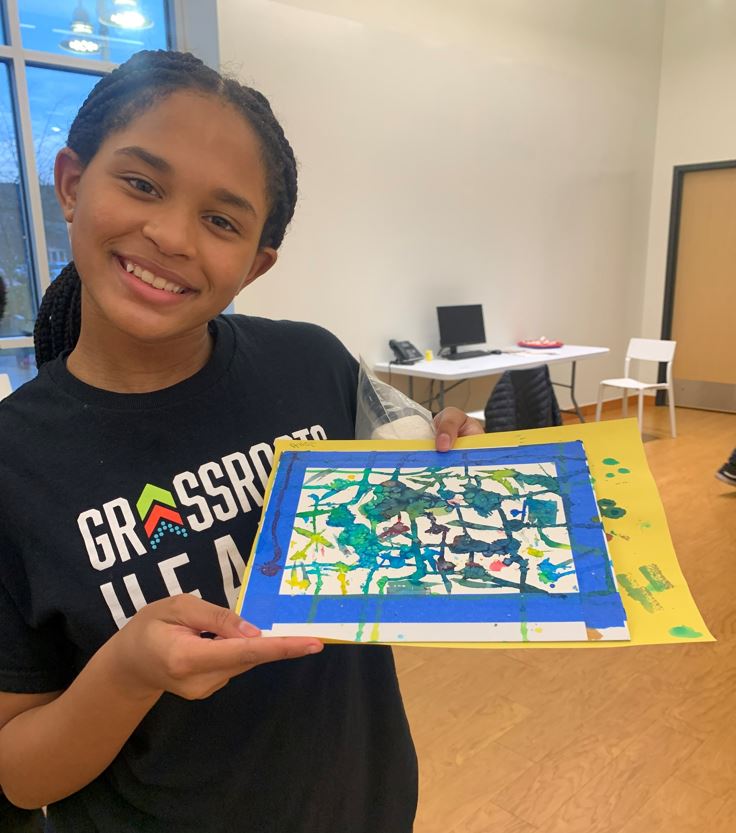
Playing with liquid watercolor: balancing intention and improvisation
We experimented with liquid watercolor on wet paper, letting the paint flow in interesting paths as well as guiding it intentionally. We added a touch of coarse salt to the pools of color, surprised and delighted by the starbursts that suddenly appeared. To correspond with Gilliam’s improvisation, persistence, and intentionality, we practiced the Tree Pose. We swayed, finding flexibility, letting go of the idea of perfection, maybe falling, laughing, regaining balance, or starting over.
On the final day, the girls reflected on their experiences in POW Yoga + Arts:
“One thing I realized in this club is that whenever we do yoga, it really takes your stress away.”
“I love how the instructors treated us, how loving and caring they are.”
“This club helps me calm down my nerves and release stress. I feel like I’m pouring out how artistic I can be and how I really feel into my art.”
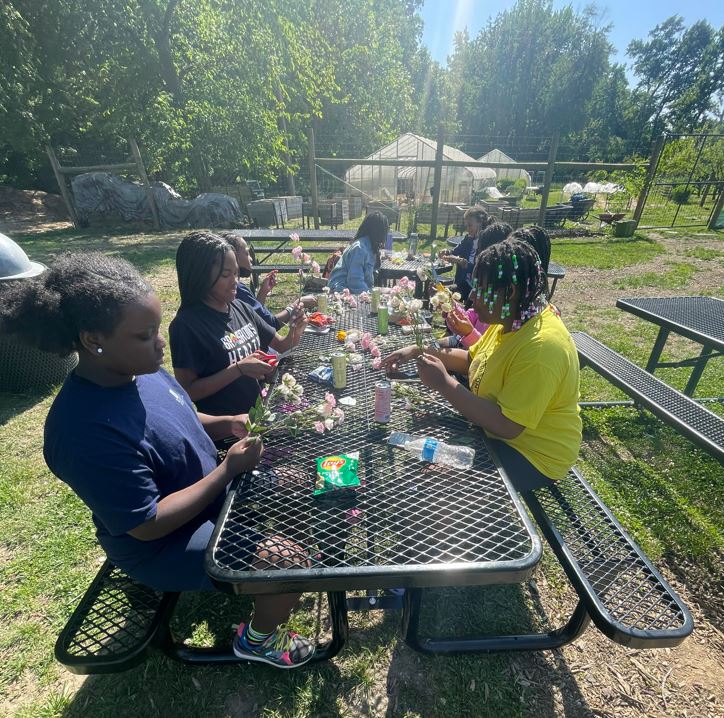
Celebrating community: offering affirmations to self and others
Our objectives were met—the girls felt welcomed, safe, and valued during each session, and they discovered tools for resolving conflict in themselves and their communities. We all embraced Dr. Val’s advice: “Healing begins with empowerment, education, and resources.”
We look forward to another session when we can continue to explore our connections to yoga, art, and community!
